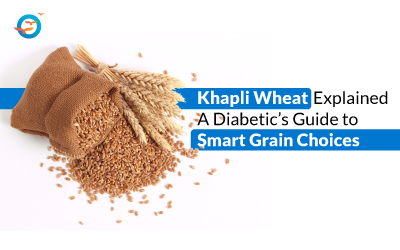Is Dairy Really Bad for Diabetics?

Dairy and diabetes type 2
Almost everyone, child, youth, or adult, loves milk. And we’ve been brought up to believe that milk is the complete health drink—rich in protein, carbs, and fats.
But nutritionists have long questioned this thinking. And with good reason. The biggest one being milk’s much-touted high percentage of calcium. While milk does contain calcium. It is of low bioavailability, that is, the human body is unable to synthesize it and extract the calcium in any meaningful quantity. Not only is milk unable to deliver calcium; it actually leaches calcium from the bones to aid in the digestion of milk.
Calcium is vital for your body—healthy teeth, strong bones depend on calcium for growth. But milk is not the only source. In fact, it’s not close to being the best one. There are many non-dairy calcium sources that are richer in calcium and are higher in bio-availability too. Plant-based foods like collards, bok choy, baked beans, leafy green vegetables, soy-milk, tofu, are all high in calcium. Plus they also contain a wealth of minerals, vitamins, and micronutrients.
But by far the biggest risk factor from milk is that it promotes insulin insensitivity. And that makes it dangerous for people with diabetes, pre-diabetes, family history of diabetes, as well as those suffering from insulin-related disorders like cholesterol, BP, PCOD/PCOS, etc.
For more information on what causes insulin insensitivity, read our article on causes of diabetes
Dairy and Diabetes Risk
There are three big risk factors linking milk to diabetes. Two of these are obvious, one is not so well known. Let’s start by looking at the obvious risk factors.
Risk factor #1: Sugar and carbohydrate content.
Milk contains between 12 and 13 grams of carbohydrates per 8-ounce bottle. A side note: these carbs in milk come in the form of lactose—which 68% of the human population are unable to digest; hence lactose intolerance. Carbs, as we all know, are not good for diabetics, as they cause spikes in blood sugar levels.
Risk factor #2: Fat
The second obvious risk factor is fat. Milk as everyone knows is very high in fat, and processed dairy products like cheese are even higher. Milk contains between 3.5 to 5% fat, and about 65% of this is in the form of unsaturated fats, which have been directly linked to high blood cholesterol and heart disease.
When fat accumulates in the body, it settles around the viscera—the organs in the mid-section of your body—and hence the spare tire. This affects the functioning of the pancreas. Worse, when it gets into the cells, it prevents glucose from the blood from entering the muscle cells where they can be burnt as fuel to create energy. The result: high blood sugar levels, and ultimately, diabetes.
Risk factor # 3: IGF
The third risk factor, which is not so obvious, but just as deadly, is a compound called IGF (Insulin-like Growth Factor). These IGF molecules look like and behave like insulin, but they do not function like insulin. On the contrary, they block insulin from performing their main job—i.e. open cells to allow the intake of glucose from the blood. This is a big reason why stopping milk and all milk products have been shown to be very effective in lowering blood sugar levels.
At FFD, dairy milk and milk products are the first food to be struck off the list of acceptable foods. And the results are consistently amazing. Don’t believe us? Try it for yourself. Just cut out all milk and milk products from your diet for about 3-4 weeks. Make a note of your blood sugar levels before starting and after. We promise you, you’ll see the difference. As a side benefit, you’ll also lose weight, improve your digestion and feel a whole lot more energetic.
There is little doubt that milk is one of the leading causes of insulin insensitivity, which leads to disorders like diabetes, heart problems, cholesterol, etc.
So the next time you’re in the supermarket, look beyond the dairy aisle for your nutrition hit. You’ll be surprised at the variety that’s out there. To read more about Is Milk Tea Bad for Health?, visit our blog.
FAQs
Is milk the best source of calcium for your body?
But milk is not the only source. There are many non-dairy calcium sources that are richer in calcium and are higher in bio-availability too. Plant-based foods like collards, bok choy, baked beans, leafy green vegetables, soy-milk all are in high in calcium.
Why is milk risky for people with diabetes?
Milk is high in fats and carbs, Milk contains between 12 and 13 grams of carbohydrates per 8-ounce bottle. Mostly in the form of lactose, which many people can't digest. Carbs can raise blood sugar levels, making milk less suitable for diabetics.
What is IGF and how does it affect insulin resistance?
IGF (Insulin-like Growth Factor) is a compound that mimics insulin but does not help in glucose transport. Instead, it blocks insulin from performing its job, contributing to insulin resistance and higher blood sugar levels.

